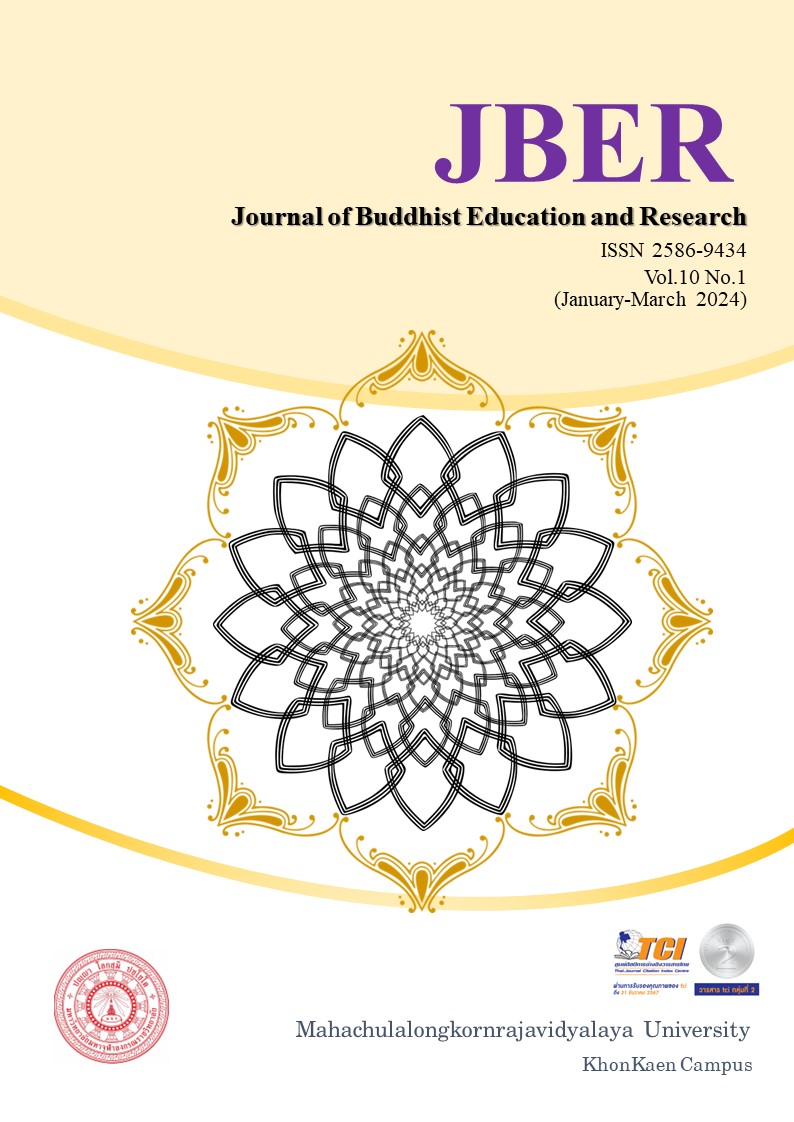THE REPRESENTATION OF GOOD CHILD IN ONLINE SOCIAL NEWS
Keywords:
Representation, good child, online social newsAbstract
This documentary research study aimed to investigate representation of good child in 100 online social news by using Critical Discourse Analysis, Representation and SPEAKING and the findings were presented in analytical descriptive way.
The research results were found that:
- the study of language strategies using to represent a good child that there were 9 words or groups containing the establishment of a good child such as a good child is a good role model, and a good child is a good member of society and country.
- Discourse practice relating to create representation includes: 1. a process to produce and distribute the contents: The contents of social news are produced by mass media with the main purpose to present news or incidents occurring in a daily basis. 2. Then, it has been passed through selection process with the purpose to implant desirable characteristics of a good child as well as to transfer value of good child that Thai society need.
- the processes of consumption and interpretation. The representation of desirable characteristics of a good child can be interpreted in several ways through the news or incident reporting. In addition, sociocultural practice also has an impact on creation of representation of a good child. They are values on seniority, the loyalty on nation, religion and, monarchy, and education. Moreover, the representation of a good child influences on the establishment of duty of good child to have desirable characteristics.
References
ณัฐพร พานโพธิ์ทอง. (2556). วาทกรรมวิเคราะห์เชิงวิพากษ์ตามแนวภาษาศาสตร์: แนวคิด
และการนำมาศึกษาวาทกรรมในภาษาไทย. กรุงเทพฯ: จุฬาลงกรณ์มหาวิทยาลัย.
ธีระยุทธ สุริยะ. (2554). ความสัมพันธ์ระหว่างภาษากับภาพตัวแทนของนักโทษประหารในหนังสือพิมพ์
รายวันไทย. วิทยานิพนธ์อักษรศาสตรมหาบัณฑิต สาขาวิชาภาษาไทย จุฬาลงกรณ์มหาวิทยาลัย.
นัดดา ธนทาน. (2557). การวิเคราะห์ศึกษาภาพเขียนมนุษย์ของทวีศักดิ์ ศรีทองดี ระหว่างปี พ.ศ.
-2544. วารสารวิชาการ Veridian E-Journal, 7(2), 1509-1523.
วิสันต์ สุขวิสิทธิ์. (2554). ความสัมพันธ์ระหว่างภาษากับอุดมการณ์ในหนังสือเรียนรายวิชาภาษาไทย
ตามหลักสูตรประถมศึกษา พ.ศ. 2503-2544: การศึกษาตามแนววาทกรรมวิเคราะห์เชิง
วิพากษ์. วิทยานิพนธ์อักษรศาสตรดุษฎีบัณฑิต สาขาวิชาภาษาไทย จุฬาลงกรณ์มหาวิทยาลัย.
ศิริพร ภักดีผาสุข. (2561). ความสัมพันธ์ระหว่างภาษากับอัตลักษณ์และแนวทางการนำมาศึกษา
ภาษาไทย. กรุงเทพฯ: สำนักพิมพ์แห่งจุฬาลงกรณ์มหาวิทยาลัย.
สรณี วงศ์เบี้ยสัจจ์, หัทยา จันทรมังกร และศตนันท์ เปียงบุญทา. (2547). รายงานการวิจัยเรื่อง
หนังสือนิทานภาพสำหรับเด็กของไทยที่ได้รับรางวัล: การวิเคราะห์เชิงวรรณกรรม
และวาทกรรม. เชียงใหม่: มหาวิทยาลัยเชียงใหม่.
สำนักงานคณะกรรมการการศึกษาแห่งชาติ สำนักนายกรัฐมนตรี. (2545). แผนการศึกษาแห่งชาติ
(พ.ศ. 2545-2559). กรุงเทพฯ: พริกหวานกราฟฟิค.
สำนักงานเลขาธิการสภาการศึกษา กระทรวงศึกษาธิการ. (2553). แผนการศึกษาแห่งชาติ
ฉบับปรับปรุง (พ.ศ. 2552-2559): ฉบับสรุป. กรุงเทพฯ: พริกหวานกราฟฟิค.
สำนักงานเลขาธิการสภาการศึกษา กระทรวงศึกษาธิการ. (2560). แผนการศึกษาแห่งชาติ
พ.ศ. 2560-2579. กรุงเทพฯ: พริกหวานกราฟฟิค.
อุมาวัลย์ ชีช้าง. (2555). ความสัมพันธ์ระหว่างภาษากับอุดมการณ์ในเรื่องเล่าสำหรับเด็ก
ในหนังสือวันเด็กแห่งชาติ พ.ศ. 2523-2553. วิทยานิพนธ์อักษรศาสตรมหาบัณฑิต
สาขาวิชาภาษาไทย จุฬาลงกรณ์มหาวิทยาลัย.
Nbtc. (2559). ค่านิยมหลัก 12 ประการ ตามนโยบายของ คสช. สำนักงาน กสทช.
สืบค้นเมื่อ 30 ก.ค. 2564,
จาก https://www.nbtc.go.th/News/govnewspartner
Sanook (2563). คำขวัญวันเด็กปี 2564 และคำขวัญวันเด็กแห่งชาติปีต่าง ๆ.
สืบค้นเมื่อ 30 ก.ค. 2564,





